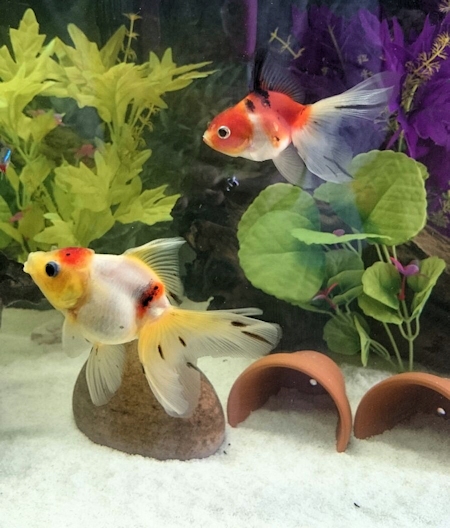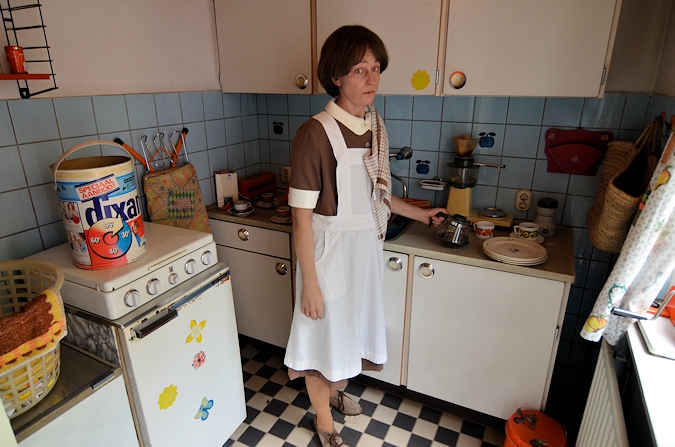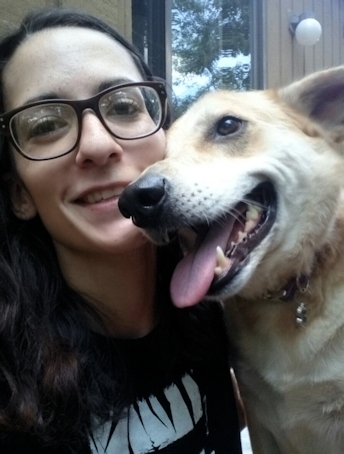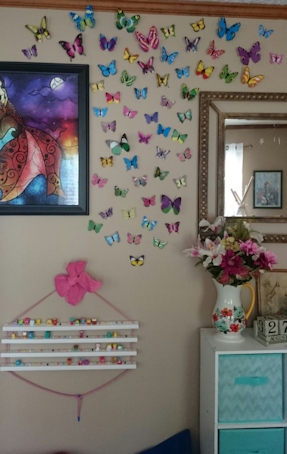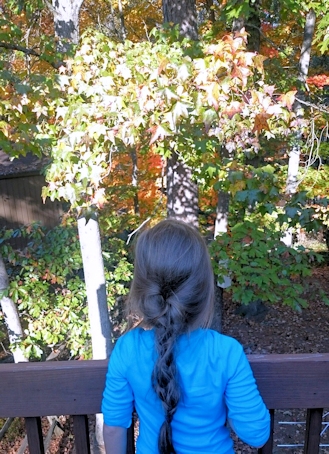
My memoir, Hope and Other Luxuries, tells about my attempts to cope with my daughter Elena’s anorexia nervosa. But it also tells the story of my creative life from the beginning of my writing career. I’ve decided to share those sections of my memoir that deal with creativity, writing, and publishing here on my blog.
The following excerpt, beginning on page 36 of the book, talks about how I found my first editor, Reka Simonsen, who was then at Henry Holt & Co. Or perhaps I should say that it talks about how she found me.
Incidentally, this section describes me doing a final readthrough of The Hollow Kingdom while on a train to Paris. Years afterwards, a reader tweeted that he was reading The Hollow Kingdom while on a train to Paris. That made me smile. The book had come full-circle.
A few more weeks of quiet passed, with just the sleepy dog and cat for company, and the goblin King’s story was complete. I printed it out and read the whole thing through on a train to Paris while Joe watched sunny fields rolling past our window.
“What do you think I ought to change?” I asked Joe as the train rocked us gently back and forth.
“Why should anything change? It’s a great story.”
“I just don’t know if this is it yet, though. I need help with it.”
“But how could it change? It’s finished. It’s all already there.”
“No. That’s only one way the story could be.” And I tried to convey to his tidy engineering brain how the story felt in my mind: like a map, maybe, or like a country covered over with dozens of different paths. Just as the train and the highway both connected our city to Paris, so one story path instead of another would cause the whole feeling of the story to change. But somehow, it was still the same place in my mind. The same country. The same world.
“I don’t get it,” Joe said finally. “I wouldn’t mess with it. I think it’s fine the way it is.”
“Well, what do you think I should do with it, then?”
He looked very serious. “I think you should send it somewhere.”
“It’s not a bad story,” I conceded. “I studied teen literature in library school, so I know what a young adult novel should look like. And I don’t think I’m bragging here, either. It’s really not bad.”
“Then do it!” he said. “Get it published. You could be a famous author and make me a million dollars. That would be amazing!”
“Oh, please!” I said. “It doesn’t work that way. Everybody wants to be a famous author! Do you know how many people are trying to get published right this minute? Everybody’s written a book.”
“I haven’t.”
“Well, everybody else has, and they’re all fighting to get their name into print. That takes years of hard work, rejections, begging, letter writing . . . You know me—I don’t have that kind of patience.”
“Publishing doesn’t look that hard,” Joe said. “I was on the web the other night, and there are these publishers all over the place who say they can help you get published. One of them could turn your story into a book.”
“So I could—what? Use it as a paperweight?” I countered. “That’s not the way to get a book to readers. The publishers who get their books into bookstores aren’t waiting to hold my hand. They’re the big places in New York City: Scholastic; Simon & Schuster; Holt; Penguin; Harcourt; Little, Brown . . .”
As I said the names, they echoed back to me from my earliest childhood, from long summer days spent sitting in the corners of offices, listening to the literature professors talk. I had heard many conversations about the New York publishing companies, about their mergers and ruptures, their tastes and trends, and their triumphs and disasters. In my childish mind, these institutions had loomed large but mysterious: the venerable guardians of society and culture, like noble families lodged in great castles. Their logos—the farmer scattering seeds, the sprinting torchbearer, the boxy double H—had seemed to me no different from the quaint images on knights’ shields in my mother’s old books.
There was the House of Tudor, and there was Random House. The main difference, to my young mind, was that Random House seemed to use its wealth more wisely.
But all of this was lost on Joe. He had spent his childhood playing Little League.
“Well, aren’t writers supposed to get agents or something?” he asked. “The agent does the letter writing and begging for you, right?”
“I have no idea,” I said. “I don’t know anything about agents. I guess I ought to find out how this works.”
When we got back from vacation, we both turned to the Internet. I looked for information about agents while Joe went through a stack of YA books from the girls’ rooms and searched the websites of their various publishers.
“There’s this book that lists all the agents,” I told him when we reconvened. “But it’s not at the library, and it’s not in our bookstore, either. I can ask my mother to copy the young-adult agents’ pages and send them to me.”
“Well, it looks like that’s the only way you’ll get published,” Joe said. “The publishers in this stack won’t give you the time of day unless you’ve got an agent. Except one—they’ll look at your manuscript as long as you give them a couple of months to do it. It’s”—he pulled out a Post-it note and consulted it—“Henry Holt and Company.”
“Holt? Oh, that’s nice,” I said. “They published Lloyd Alexander’s Prydain series.”
Even to the engineer beside me, that comment had meaning. Lloyd Alexander is my hero. I loved his Prydain books so much as a child that when the girls were old enough for them, I’d sat the whole family down, including Joe, and we had read them out loud together.
“What great books!” Joe said, his eyes dreamy. “Wouldn’t it be great if your book could come out from the same place that published his?”
I laughed. “Please! It’s not going to happen.”
Nevertheless, I had nothing to lose except the cost of a box and some printing paper, so the next morning, Joe posted a bulky package to New York City. Then I got on the phone with my mother to request the photocopies.
A thick packet of copied pages arrived a couple of weeks later. I brewed an extra-strong cup of coffee and sat down to read through them. Page fees, commissions, percentages, extra charges, instructions on what not to send—my heart sank as I slogged along.
This wasn’t my idea of the venerable guardianship of culture. It felt more like selling a used car. This was exactly that uncaring world, that shark-toothed, dog-eat-dog world that was the antimatter to my worlds of imagination.
Market analysis and genre breakdowns . . . what did that have to do with magic and wonder?
Oh, well, I thought. At least I gave it a look. And I set the stack of photocopies aside and did other things. I think I may even have finished the ironing.
Weeks went by. The photocopies started to gather dust. Meanwhile, Joe kept talking about publishers and contracts.
“Did you find some people to send your story to?” he asked.
“Not today,” I said. “I don’t know. Maybe tomorrow.” And maybe tomorrow is exactly where my publishing career would have stayed. But that’s when it happened: that’s when something so extraordinary took place that it could have come right out of my dreamworlds.
The email materialized in my inbox late at night, like a disembodied voice from another dimension:
Dear Ms. Dunkle,
The Hollow Kingdom managed to fall into the hands of the editor here at Holt who would most appreciate it. I am a big fan of this kind of fantasy, and I very much enjoyed reading your novel . . .
Was I asleep? Was I actually reading this?
Here was no hard-bitten analysis of fees and markets. This was the voice of a friend, a kindred spirit, telling me what was great in my story—and what could improve. As I read her suggestions, I felt them fall into place in my mind. Of course! I had known those were problems, hadn’t I?
If you’d like to discuss anything I’ve said (or haven’t said), that magical letter concluded, please feel free to email or call me. And there followed the contact information of a real, live editor ensconced in one of those semimythical castles of my childhood—the actual number of an actual phone that rang on an actual desk halfway up an actual skyscraper in the heart of really-truly New York City.
Joe’s proposal of marriage didn’t sweep me off my feet the way that midnight email did. I wandered to bed in a rainbow-colored haze, in a cloud of pure, blissful romance. I was every bit as happy and giddy as any girl who ever went to a ball. All I needed was a rose to hold as I drifted off to sleep.
Text copyright 2015 by Clare B. Dunkle; text courtesy of Chronicle Books. Photo of a crest at Tübingen University (Universität Tübingen), Germany, copyright 2014 by Joseph Dunkle. To read my latest blog posts, please click on the “Green and Pleasant Land” logo at the top of this page.




